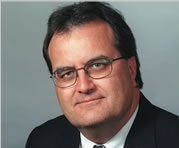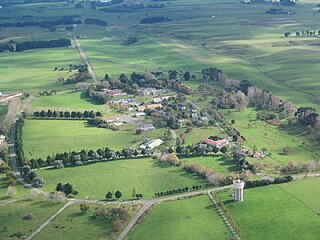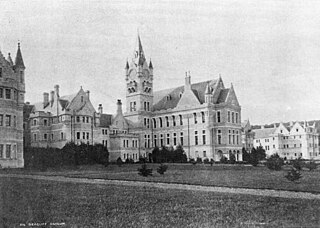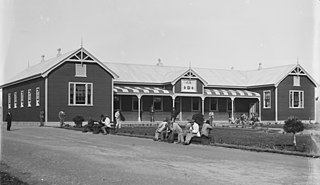
Mark James Gosche is a New Zealand politician. He is a member of the Labour Party. He was born in Auckland to Samoan parents, and has been active in New Zealand's Pasifika community.

Whatipu is a remote beach on the west coast of the Auckland Region in the North Island of New Zealand. The Whatipu area has been managed as a scientific reserve by the Auckland Regional Council since 2002. The road to it is unsealed. To the south of Whatipu is Manukau Harbour. To the north is Karekare. Whatipu is located at the southern end of the Waitākere Ranges. Shifting sands have substantially changed the beach since the 1940s. Over 6 square kilometres has been added to the beach since then.

Lake Alice Hospital was a rural psychiatric facility in Lake Alice, Manawatū-Whanganui, New Zealand. It was opened in August 1950, and had a maximum security unit. Like many New Zealand psychiatric hospitals, Lake Alice was largely self-sufficient, with its own farm, workshop, bakery, laundry, and fire station. It also had swimming pools, glasshouses, and vegetable gardens.

Middlemore Hospital is a major public hospital in the suburb of Ōtāhuhu, Auckland, New Zealand. The hospital has approximately 800 beds. There are 24 operating theatres across two sites.

Seacliff Lunatic Asylum was a psychiatric hospital in Seacliff, New Zealand. When built in the late 19th century, it was the largest building in the country, noted for its scale and extravagant architecture. It became infamous for construction faults resulting in partial collapse, as well as a 1942 fire which destroyed a wooden outbuilding, claiming 37 lives, because the victims were trapped in a locked ward.
A registered psychiatric nurse (RPN) specialises in a field of nursing that focuses on the mental health of patients. Psychiatric nurses assist the interdisciplinary team in the assessment and treatment of the patient's psychiatric illness and symptoms. They treat a variety of mental health disorders such as bipolar, depression, schizophrenia, anxiety, substance abuse addiction and eating disorders such as bulimia and anorexia. However, they do not diagnose the patient, this is the responsibility of a qualified psychologist or a psychiatric doctor. Psychiatric nurses are in charge of dispensing medication and the overall care of patients. Registered psychiatric nurses work under the supervision of doctors’ and they practice within the health care industry, mostly in mental health clinics, outpatient facilities, mental health agencies, long-term care centres or hospitals.

Waikato Hospital is a major regional hospital in Hamilton, New Zealand. It provides specialised and emergency healthcare for the Midlands and Waikato area with patients referred there from feeder hospitals like Whakatāne, Lakes area, Tauranga, Thames, Tokoroa and Rotorua.

Dame Margaret Clara Bazley is a New Zealand public servant. She began her career as a psychiatric nurse and rose through the ranks to senior leadership positions at psychiatric hospitals and district health boards. In 1978 she became the Director of Nursing at the Department of Health, the chief nursing position in New Zealand and at that time the most senior position in the public service held by a woman, and in 1984 became the first female State Services Commissioner. She subsequently held top positions at the Department of Transport and the Department of Social Welfare.

The healthcare system of New Zealand has undergone significant changes throughout the past several decades. From an essentially fully public system based on the Social Security Act 1938, reforms have introduced market and health insurance elements primarily since the 1980s, creating a mixed public-private system for delivering healthcare.

The Seaview Asylum was a psychiatric hospital located to the north of Hokitika, in the West Coast Region of New Zealand's South Island, adjacent to the former Westland Hospital. Open from 1872 to 2009, Seaview trained psychiatric nurses and was once the town's biggest employer.

Carrington Hospital is a former lunatic asylum and psychiatric hospital listed as a Category I building, located in Point Chevalier, Auckland.

David Scott Clark is a former New Zealand Labour Party politician.
The Office of the Waikato District Hospital and Charitable Aid Board (Former) is a historic building at 17 Hood Street, in the CBD of Hamilton and was in 2008 listed as Category 2 by Heritage New Zealand.

The Counties Manukau District Health Board was a district health board which focused on providing healthcare to the Counties Manukau area in southern Auckland, New Zealand. As of 2016, it ws responsible for 534,750 residents; or 11% of New Zealand's population. In July 2022, CM Health was merged into the national health service Te Whatu Ora.

Kingseat is a rural community between Karaka and Waiuku located on the Manukau Harbour in Auckland, New Zealand.

Debra Joy Lampshire is a New Zealand trainer, educator, advocate and experience-based expert on mental health.

Kingseat Hospital is a former mental health facility near Newmachar in Aberdeenshire, Scotland. Some of the old hospital buildings now form the central area of the village of Kingseat.

Queen Mary Hospital, in Hanmer Springs, New Zealand is a former residential alcohol and drug treatment hospital. It opened in 1916 to treat returned servicemen from World War I, on the site of a sanatorium built in 1879. From the 1920s to 1960s it treated mental health conditions generally but in the 1970s it became the national specialist addiction and alcohol treatment centre. The hospital closed in November 2003. The Queen Mary Hospital (Former) and Hanmer Springs Thermal Reserve Historic Area was designated as a historic site by Heritage New Zealand in 2004. Within that area three buildings, the Soldiers' Block, Nurses' Home and Chisholm Block, were given Category I protection by Heritage New Zealand in 2005.


















